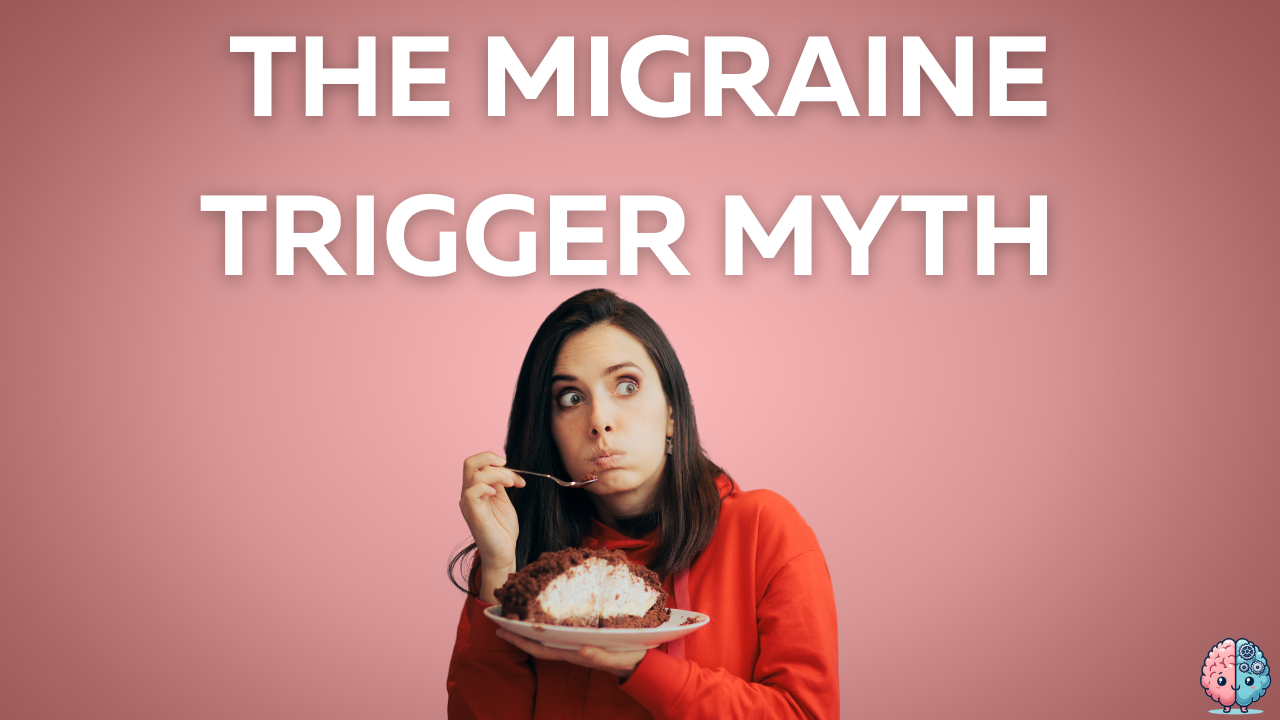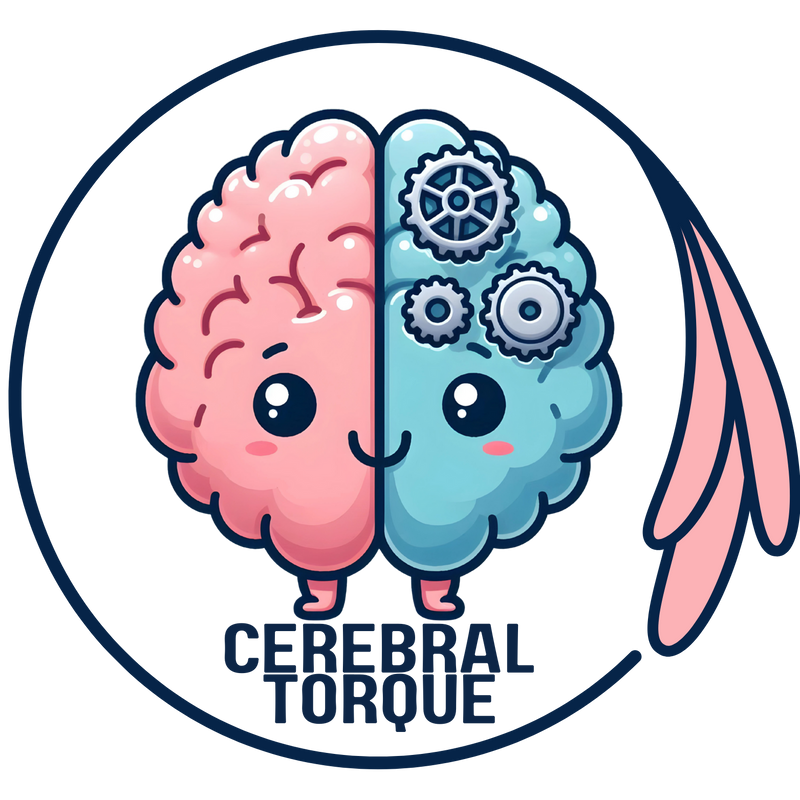The Migraine Trigger Myth: Why We're Often Wrong About What Causes Our Headaches
Posted on November 15 2024,

The Truth About Migraine Triggers
For those who have migraine disease, identifying triggers has long been considered a crucial step in managing the condition. However, research suggests that our confidence in identifying these triggers might be significantly misplaced. This revelation has significant implications for how we approach migraine management and self-reporting of triggers.
The Problem with Self-Reporting: What the Research Shows
A study by Donoghue et al. examined 254 individuals using the Curelator Headache™ platform (now called the N1-Headache™ platform), revealing interesting statistics about our ability to identify migraine triggers. The researchers found that participants suspected anywhere from 1 to 42 different triggers, but the accuracy of these self-reported triggers was incredibly low. Out of 3,278 suspected triggers reported by participants, only 592 (a mere 18%) were statistically confirmed through rigorous analysis.
The study went deeper into commonly suspected triggers, revealing very low confirmation rates. Neck pain and tension, which showed the highest confirmation rate, was only verified in 44% of cases where it was suspected. Bright lights, often cited as a common trigger, was confirmed in just 36% of cases. Stress, perhaps the most commonly blamed trigger, was confirmed in only 26% of cases, while tiredness and fatigue showed a 25% confirmation rate. More surprisingly, dehydration, which many migraine patients carefully monitor, was confirmed in only 16% of cases.
The Unexpected Discovery of "Protectors"
In a follow-up study, Donoghue and colleagues made an even more revealing discovery. Some factors, traditionally viewed as triggers, were found to actually protect against migraine attacks in certain individuals. Among the 254 users studied, alcohol emerged as a protective factor for 15 individuals, while travel showed protective effects in 14 cases. Perhaps even more interestingly, stress - typically considered a major trigger - demonstrated protective properties in 12 individuals. Even bright lights and strong odors, long considered universal triggers, showed protective effects in some participants. Are they actually protective? Well, probably not.
Protective Factors Found
- Alcohol: Protective for 15 individuals
- Travel: Protective effects in 14 cases
- Stress: Actually protective for 12 people
- Bright lights & strong odors: Showed protective effects in some participants
The researchers conducted follow-up interviews with approximately 100 individuals to understand these counterintuitive findings. They discovered that context played a crucial role. For instance, when neck pain occurred, some individuals responded with massage, stretching, or heat therapy - interventions that might have been the true protective factors. Similarly, while travel is often considered stressful, those who experienced it as protective reported that traveling represented relaxation time for them.
The Psychology Behind Misidentification
The phenomenon of misidentifying triggers can be explained by what psychologists term "confabulation" – our brain's tendency to create false memories or misinterpret associations. A study by Olson et al. (2015) at McGill University demonstrated how our minds can create false associations while maintaining confidence in our choices. In their experiment, participants were asked to select a card while a magician quickly flipped through a deck. Unknown to the participants, one card was subtly shown longer than the others. 98% of participants chose the manipulated card, yet only 9% noticed this influence.
The Card Study Results
98% of participants chose the manipulated card, yet only 9% noticed the influence. When asked to explain their choice, participants created elaborate justifications despite having no real reason for their selection.
Furthermore, when asked to explain their choice, participants created elaborate justifications. Some claimed they chose the card because "it was bright and stood out" (even when it was a black card), others insisted they had been thinking of that specific card before the experiment began, and still others cited personal connections to the number or suit. This mirrors exactly what we see in migraine patients who create detailed explanations for why certain factors trigger their headaches, even when statistical analysis shows no actual connection.
The parallels between the card study and migraine trigger identification are remarkable:
- In both cases, people maintain high confidence in their ability to identify cause and effect
- Both situations involve people creating detailed but false explanations for their choices/experiences
- The real influences (timing in card selection, statistical correlations in migraines) remain largely invisible to conscious awareness
- When presented with evidence that their explanations might be wrong, people in both scenarios tend to stick to their original beliefs
This psychological tendency to create false associations while maintaining high confidence in our choices helps explain why migraine patients might continue to avoid certain triggers even when there's no statistical evidence supporting the connection. Just as the card study participants were absolutely certain they had freely chosen their card, migraine patients may often remain convinced of specific triggers despite evidence to the contrary.
Moving Forward: Evidence-Based Trigger Identification
The research suggests that accurate trigger identification requires a more systematic approach. Daily data collection over extended periods (90 days or more) combined with statistical analysis proves far more reliable than retrospective recall. The previously mentioned studies demonstrate that digital platforms capable of tracking multiple variables and analyzing their relationships can reveal both triggers and protective factors that individuals might never have suspected.
Key Takeaways for Better Trigger Management
- Use systematic data collection over 90+ days rather than relying on memory
- Consider that suspected "triggers" might actually be protective factors
- Focus on individual patterns rather than population-level assumptions
- Context matters more than the factor itself
- Statistical analysis is essential for accurate identification
This research opposing the current status quo of treatment fundamentally challenges our traditional approach to migraine trigger identification. With only 18% of suspected triggers being statistically confirmed, and the discovery that some "triggers" might actually be protective, it's clear that our intuitive methods of identification are unreliable. This understanding should shift our approach from casual self-reporting to more rigorous, data-driven methods of trigger identification.
Moving forward, migraine management should focus on individual patterns rather than population-level assumptions about triggers. As the research shows, what triggers one person's migraine attack might "protect" another, and the context in which a factor occurs might be more important than the factor itself.
References
Donoghue, S., Boucher, G., Peris, F., & Mian, A. "Migraineurs' suspected triggers compared with scientifically determined associations using a daily diary and statistical analysis platform, Curelator Headache™"
Donoghue, S., Mian, A., Albert, M., Boucher, G., & Peris, F. "Identification of 'protectors' - factors associated with reduced risk of migraine attacks: some surprising observations and interpretations"
Donoghue, S., Peris, F., Torres, F., Mian, A., & Wöber, C. "Statistical methodology for determining potential migraine trigger factors in individuals"
Olson, J.A., Amlani, A.A., Raz, A., & Rensink, R.A. (2015). Influencing choice without awareness. Consciousness and Cognition. doi:10.1016/j.concog.2015.01.004
Mon, Nov 17, 25
Migraine Research - During the week of my absence.
Migraine Research - During the week of my absence. The Association Between Insomnia and Migraine Disability and Quality of Life This study examined how insomnia severity relates to migraine disability...
Read MoreSat, Nov 01, 25
Anti-CGRP Monoclonal Antibody Migraine Treatment: Super-Responders and Absolute Responders and When to Expect Results
Anti-CGRP monoclonal antibodies achieved 70% super-response and 23% complete migraine freedom in a one-year study. Most dramatic improvements occurred after 6 months of treatment. For patients with chronic or high-frequency...
Read MoreAll Non-Invasive Neuromodulation Devices for Migraine Treatment
Wondering if migraine devices actually work? This guide breaks down the latest evidence on non-invasive neuromodulation devices like Cefaly, Nerivio, and gammaCore. Learn which devices have solid research backing them,...
Read More



